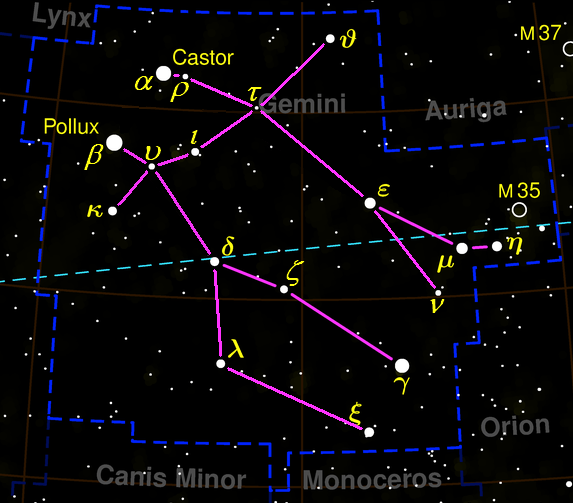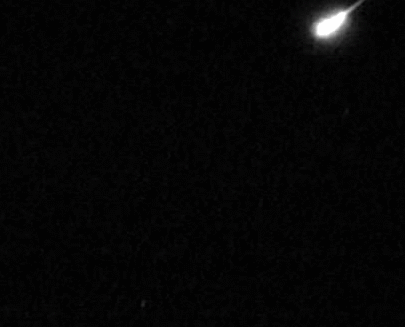Geminid Meteor Shower
- bobbydamianocorley
- Dec 10, 2020
- 4 min read
With all our talks about planets and the pole stars, we thought we would invite you to a spectacular event that you can see in your own backyard. It is none other than the Geminid Meteor Shower! The Geminids will be visible from Dec. 4 – 16, but the peak this year is the night of Dec. 13-14, 2020.
The Geminids are considered to be one of the most spectacular meteor showers of the year, with the possibility of sighting about 120 meteors per hour at its peak.
The shower owes its name to the constellation Gemini because the meteors seem to emerge from this constellation in the sky. The brightest stars of Gemini are Pollux and Castor. In Greek mythology, these twins helped Jason and the Argonauts search for the Golden Fleece. The Fleece itself is known as the constellation of Aries the Ram. The constellation representing the Twins will rise at about 6:30 PM here in Austin, TX on Sunday, December 13th.
A lot of people confuse meteors (also called shooting stars) with comets, because they are both shown as a streak or a "star" with a tail. Actually, they are very different. A comet is a small Solar System object that orbits the Sun in a very elongated orbit. A comet is leftover from the formation of the Solar System almost 5 ½ billion years ago. It mostly made of ices, dust and sand, so as it approaches the Sun, the ices melt or "sublime" directly from a solid to a gas, which gives them their distinctive tails. If you see a comet in the nighttime sky, it will not appear to move as all. Only by observing the comet over several nights can you tell that it moves slowly with respect to the background stars. But the fact that the Sun's heat is melting the comet means that pieces of it come off and remain in orbit as the comet moves on. Eventually, after many passes close to the Sun, a comet may disintegrate completely.
However, a meteor is a tiny piece of cosmic debris (called a meteoroid while in space), that enters the Earth's atmosphere at extremely high speed and burns up due to friction with the Earth's atmosphere. When you see a meteor, it will appear to streak quickly across the sky and then disappear. Most meteors are smaller than a grain of sand, so almost all of them break apart in pieces and never hit the Earth's surface. An unusually large and bright meteor is known as a fireball. A meteor which is large enough to survive its fiery journey and hit the Earth, is then called a meteorite.
Texas Meteorite
But what exactly is a meteor shower and what causes them? A meteor shower is an event in which several meteors are observed to originate from one point in the nighttime sky. This is usually because they are part of the debris left in orbit from a passing comet. As the Earth moves along in its orbit, it passes through this debris cloud.
Unlike most other meteor showers, the Geminids are associated not with a comet, but with an asteroid: 3200 Phaethon. This asteroid takes only about 1.4 years to orbit the Sun. Unlike most asteroids, which are basically solid rock or rocky iron, 3200 Phaethon apparently also has pockets of ice and gas. As it approaches the Sun, some of those ices melt and it develops a tail like a comet. Even though it may not eject as much material as most comets, its faster orbital period means that it leaves a substantial debris field. During the week of December 4th through the 16, the Earth will pass through the debris field of this asteroid, creating the annual Geminid Meteor Shower.
Most meteor showers are best viewed after midnight. An advantage of the Geminid Meteor Shower, is that it is visible earlier in the evening because its radiant constellation, Gemini, rises so early. Again, it begins on the night of the 13th and continues into the morning of the 14th of December. Another reason the Geminids are likely to be especially great this year is that the moon is near its New Moon phase. That means there will be no bright moon to interfere with the dark skies needed to see the meteors.
How to See the Geminids
One does not need any special equipment or skills to view a meteor shower. All you really need is a clear sky, lots of patience, and a comfortable chair or blanket. The following tips can help maximize your shooting star viewing experience.
1. Find a secluded viewing spot, away from the city lights. The less light pollution the better. Once at the venue, your eyes may take 15 to 20 minutes to get used to the dark.
2. Dress for the weather, and make sure you are comfortable, especially if you plan to stay out long. Bring a blanket or a comfortable chair with you—meteor watching can be a waiting game. Realize that a maximum of 120 meteors per hour means 2 per minute. And you may go 5-10 minutes or more before seeing any meteors, then see several within a couple of minutes.
3. Once you have found your viewing spot, lie down on the ground, and look up in the direction of Gemini.* But also realize that the meteors can be seen in any direction, they will just seem to all come from the direction of Gemini.
4. The constellation of Gemini will rise in the northeast. The higher in the sky the constellation is, the easier it will be to see the meteors. On December 13th here in Austin, Gemini will rise around 6:30 PM.
*If you have an app that shows you the constellations, you can find Gemini. You can also use the Interactive Meteor Shower Star Map from Time and Date. Here is a link to it:
https://www.timeanddate.com/astronomy/meteor-shower/geminids.html. This shows which direction to look to find Gemini at any particular time on the night of Dec. 13-14.
So, be sure not to miss this special event! Even from near the city, you should be able to see a few bright meteors.
Here is an article about the Geminids from 2010: https://willgater.com/2010/12/08/observing-the-2010-geminid-meteor-shower/. Two things to note: first is the illustration of the Geminid meteors emanating from Gemini.
Courtesy of Stardate.com
With Special Thanks to www.Timeandate.com for their Information. You can follow this link for more details.














Comments